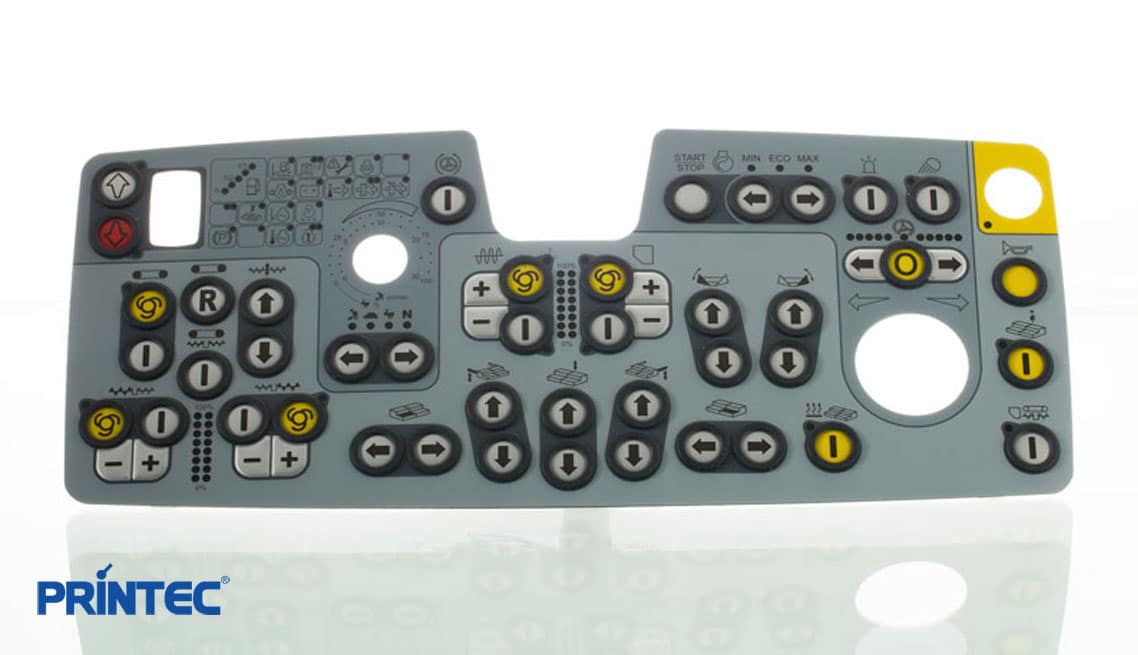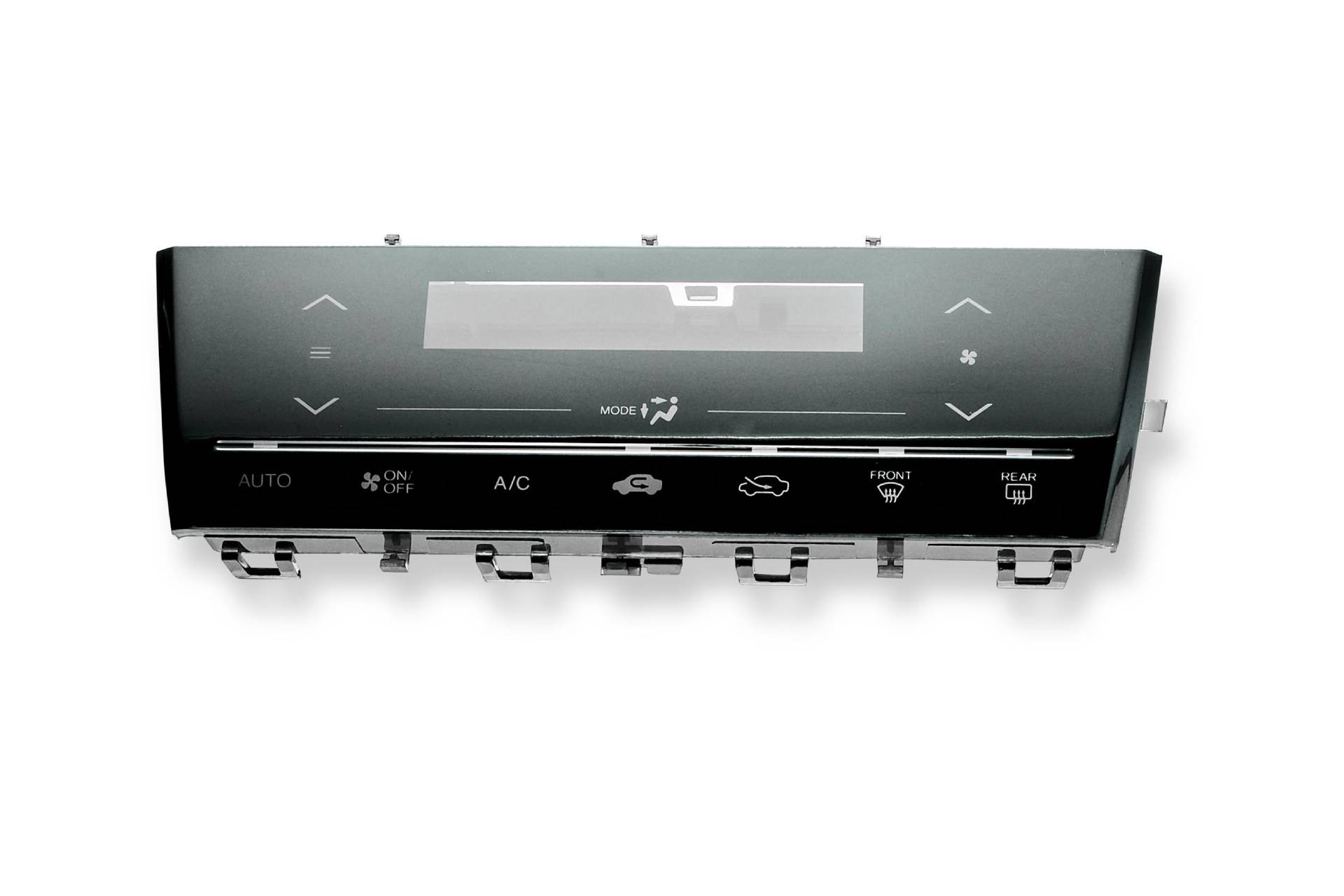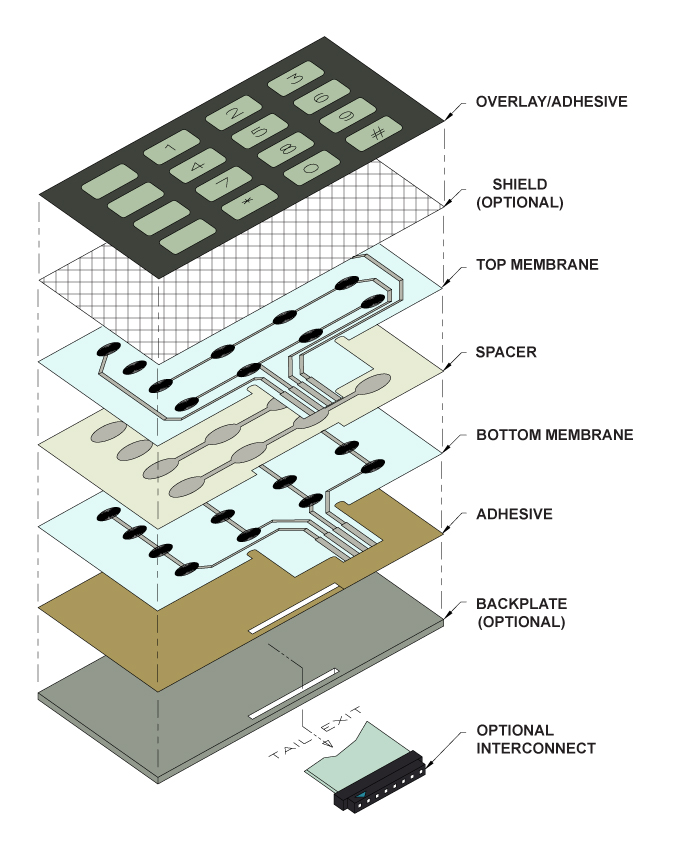Working with a authorized membrane switch manufacturer ensures alignment with industry standards.
Working with a authorized membrane switch manufacturer ensures alignment with industry standards.
Blog Article
All About Membrane Switch Over: Understanding Its Design and Functionality
When you think concerning the control user interfaces in modern gadgets, membrane layer switches typically come to mind. Allow's discover what collections membrane changes apart from various other control systems.
What Are Membrane Switches?

Their smooth nature makes them very easy to tidy and immune to dust and moisture, an essential function in lots of environments. Membrane layer buttons can also be customized relating to form, dimension, and graphics, allowing producers to create special interfaces customized to specific items. Plus, they're light-weight and thin, which helps in minimizing the general mass of tools. On the whole, membrane layer switches play a significant role in enhancing user experience throughout a large variety of applications.
Just How Membrane Layer Switches Job
When you push a secret on a membrane button, it turns on a straightforward yet efficient mechanism. The leading layer, typically constructed from adaptable product, pushes down onto a conductive layer under it. This action bridges the void in between conductive traces, finishing an electric circuit. As soon as the circuit closes, it sends a signal to the gadget's controller, which analyzes your input.
You'll see that the tactile responses varies based upon the switch layout, using either a soft click or a more pronounced feedback. As soon as you launch the key, the membrane go back to its initial placement, reopening the circuit and stopping the signal. This process happens virtually immediately, ensuring a receptive customer experience.
Membrane switches are prominent as a result of their toughness and resistance to dirt and moisture, making them optimal for numerous applications, from house appliances to clinical tools. Comprehending this operation assists you value their widespread use.
Key Components of Membrane Switches
Recognizing the crucial elements of membrane layer switches is basic for grasping their performance and design. The safety layer guards versus environmental elements and use, expanding the button's life-span. By recognizing these components, you'll obtain insight right into just how membrane switches over operate and their importance in different applications.
Materials Made Use Of in Membrane Switch Over Design
The performance and sturdiness of membrane layer changes greatly depend upon the materials used in their style. You usually encounter polyester and polycarbonate as key substrates due to their excellent toughness and versatility. These products withstand scratches and chemicals, making them perfect for requiring environments.
The conductive layers typically make use of silver or carbon, picked for their integrity and conductivity. membrane switch manufacturer. Silver supplies superior performance, while carbon is a cost-effective choice. For the overlay, you could consider a matte or shiny coating, depending on your visual needs and individual experience
Make certain to pick adhesives that stand up to environmental factors like temperature and humidity. Selecting the ideal products will certainly assure your membrane layer switch stands the test of time.
Design Considerations for Membrane Buttons
While designing membrane layer buttons, it's crucial to take into consideration various aspects that influence their functionality and customer experience. Begin by concentrating on the design and switch size; make sure they're intuitive and very easy to browse. Think about the responsive comments you want to provide-- will individuals need a visible click or a softer touch? Additionally, think about the materials you'll use, as they'll affect toughness and visual appeals.
Verify your style fits ecological variables, like dampness or temperature level variants, which can affect efficiency. By very carefully considering these components, you'll create a membrane switch that enhances functionality and contentment.
Applications of Membrane Switches
Membrane Get More Information layer switches are flexible components found in different applications, from industrial equipment to customer electronic devices. You'll see their influence in devices that call for durable interfaces and in devices that take advantage of streamlined layouts. Comprehending these applications helps you appreciate the capability and usefulness of membrane layer buttons in day-to-day modern technology.
Industrial Devices Use
When you're seeking to improve the performance of industrial equipment, membrane layer buttons use a trusted solution that incorporates toughness with user-friendly design. These buttons are best for severe atmospheres, offering resistance to dust, dampness, and chemicals. You'll locate them in control panels for making makers, heating and cooling systems, and clinical tools, where accuracy and responsiveness are crucial. Their low profile indicates they fit effortlessly into various tools, saving beneficial area while preserving simplicity of usage. With adjustable graphics and backlighting alternatives, you can develop an instinctive interface for operators, boosting efficiency and security. Plus, their lengthy life expectancy reduces maintenance prices, making them a wise investment for your commercial applications. Embrace membrane buttons to simplify your procedures and boost overall performance.
Consumer Electronics Combination
In the domain of consumer electronic devices, membrane layer switches play a vital role in boosting individual interaction and tool performance. Membrane buttons additionally assure sturdiness and resistance to dust and dampness, prolonging the life expectancy of your electronics. By picking membrane layer buttons, you enhance not just the performance but likewise the design of your gadgets, making daily interactions smooth and pleasurable.
Advantages and Disadvantages of Membrane Layer Switches
While membrane layer switches supply a variety of advantages, they also include some downsides that you should consider. One considerable advantage is their compact style, making them perfect for space-constrained applications. They're also cost-efficient, offering a sturdy remedy with a low manufacturing price. On top of that, their seamless surface area is simple to clean, boosting hygiene in environments like healthcare facilities.

Membrane layer switches can have a shorter lifespan contrasted to mechanical buttons, specifically under hefty use. They can also be much less tactile, which may influence user responses throughout procedure. Stabilizing these pros and disadvantages will certainly assist you identify if membrane layer buttons are the best fit for your job.
Frequently Asked Inquiries
Exactly How Long Do Membrane Changes Normally Last?
Membrane switches over generally last in between 5 to 10 years, relying on usage and ecological conditions. You'll wish to examine elements like wear, direct exposure to wetness, and temperature level variations to evaluate their long life effectively.
Can Membrane Layer Switches Be Customized for Specific Layouts?
Yes, you can customize membrane switches to fit specific designs (membrane switch manufacturer). You'll have the freedom to select shades, forms, and layouts that match your project's demands, guaranteeing they blend seamlessly with your general visual
What Is the Cost Range for Membrane Switch Manufacturing?
The expense range for membrane switch production usually falls between $1 and $10 each, relying find out this here on variables like style complexity, quantity, and materials. You can get quotes from suppliers to find the finest choice.

Are Membrane Changes Water-proof or Resistant?
Membrane switches can be created to be water-proof or resistant, depending upon materials utilized and building approaches. If you require them for damp atmospheres, ensure you define those needs throughout the layout procedure.
Just How Do Membrane Layer Switches Over Contrast to Traditional Switches?
Membrane buttons are usually thinner and extra adaptable than typical buttons, offering a sleek design. They're more helpful hints typically much easier to clean up and integrate, however may not offer the tactile comments you're utilized to with mechanical options.
Verdict

Report this page